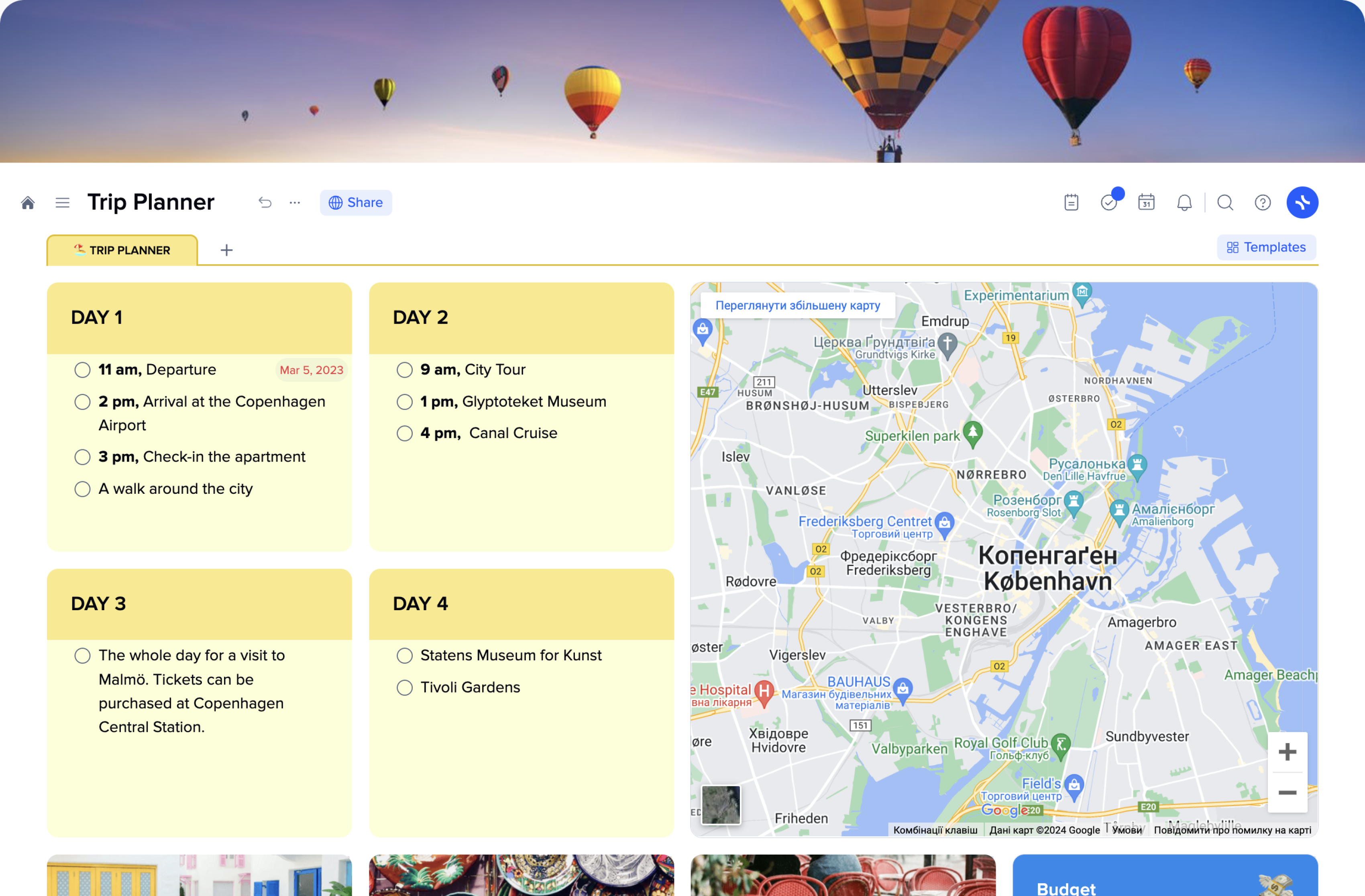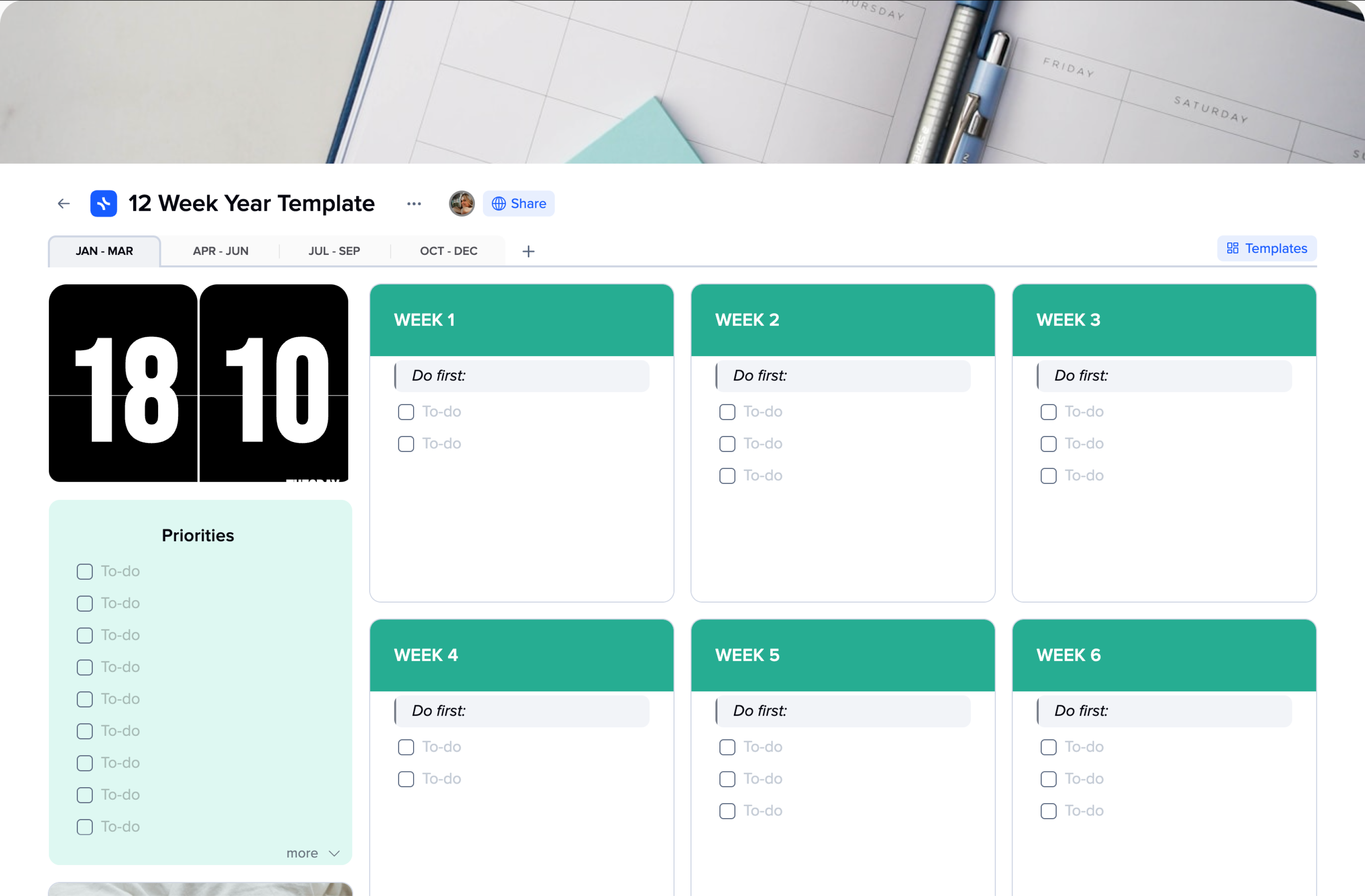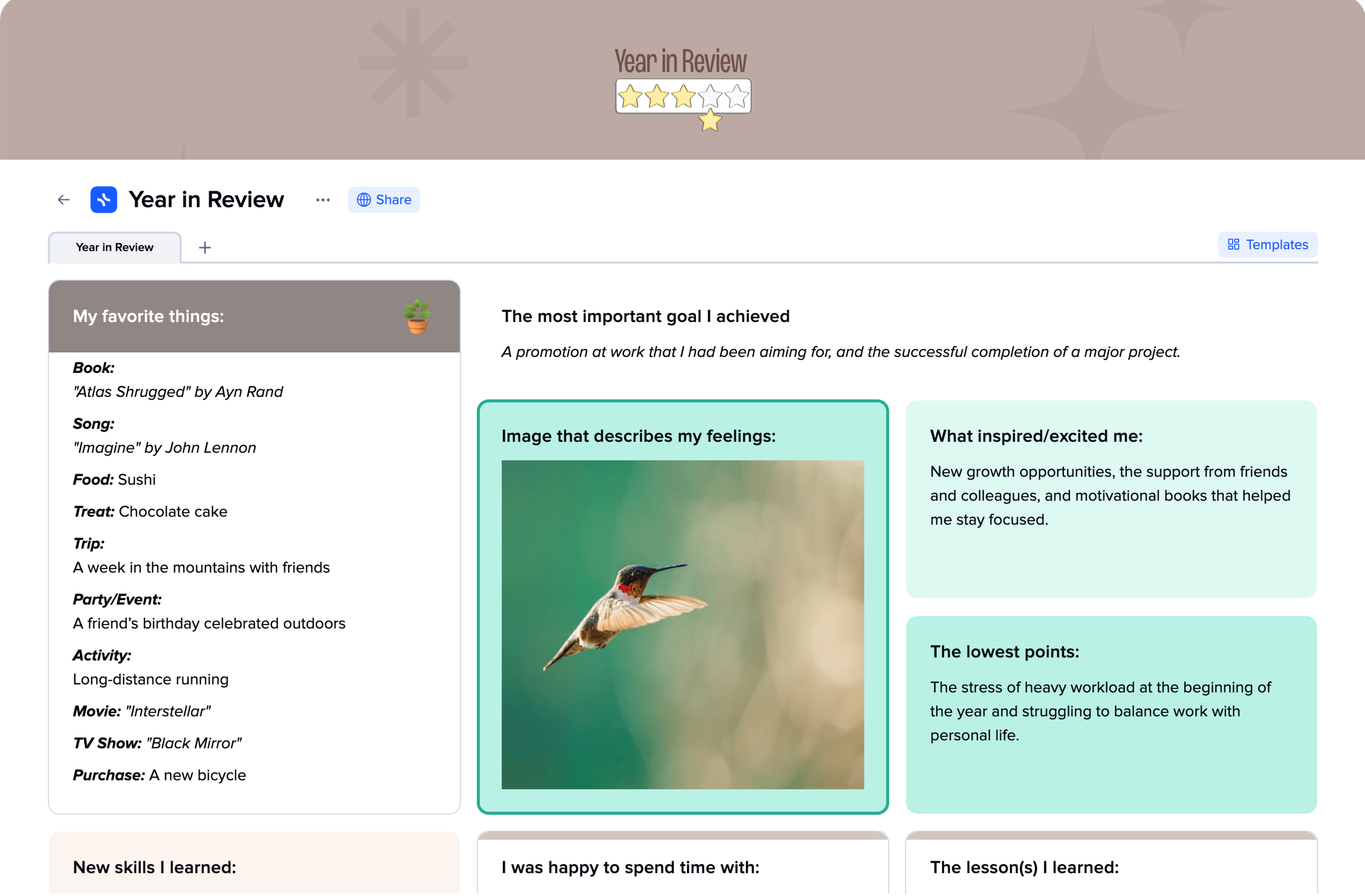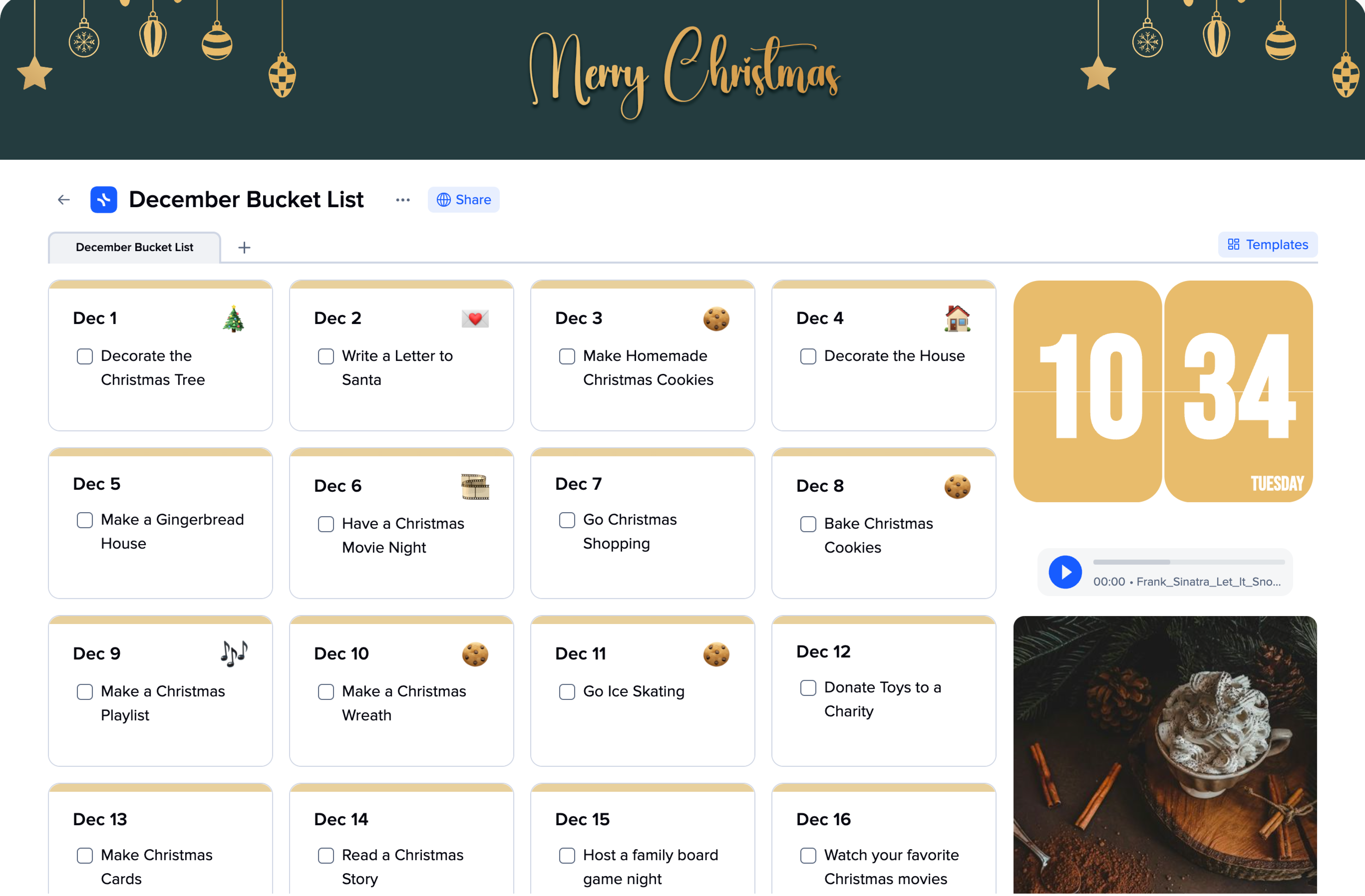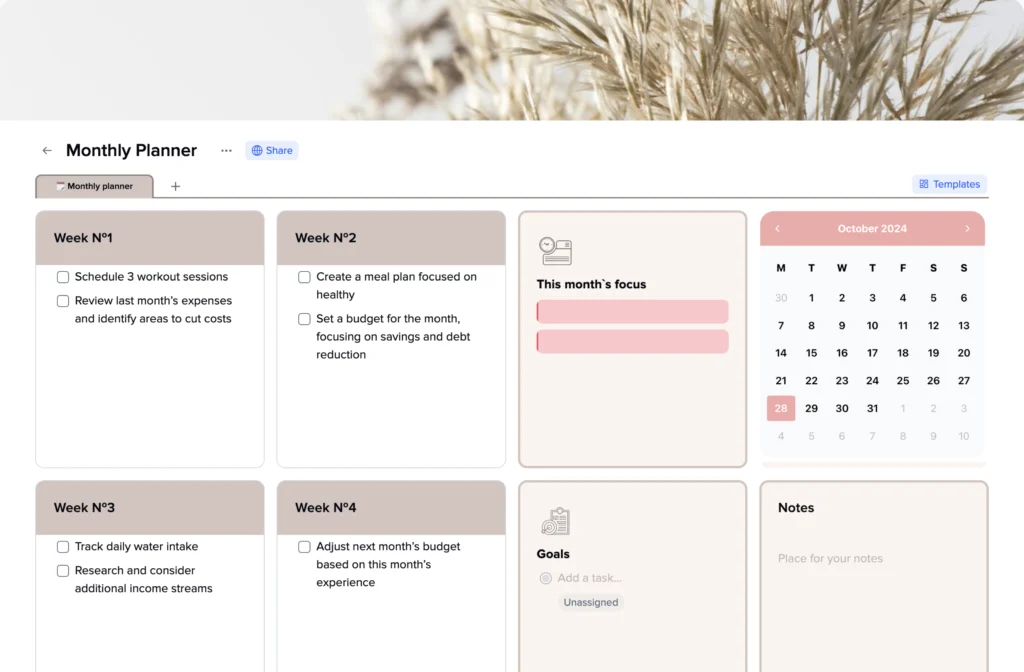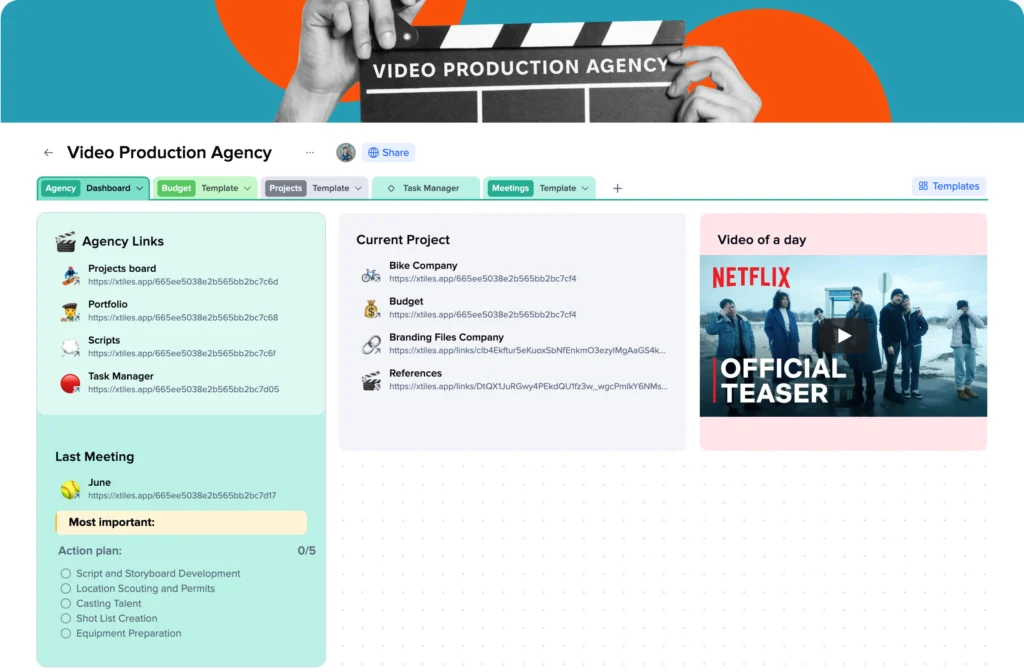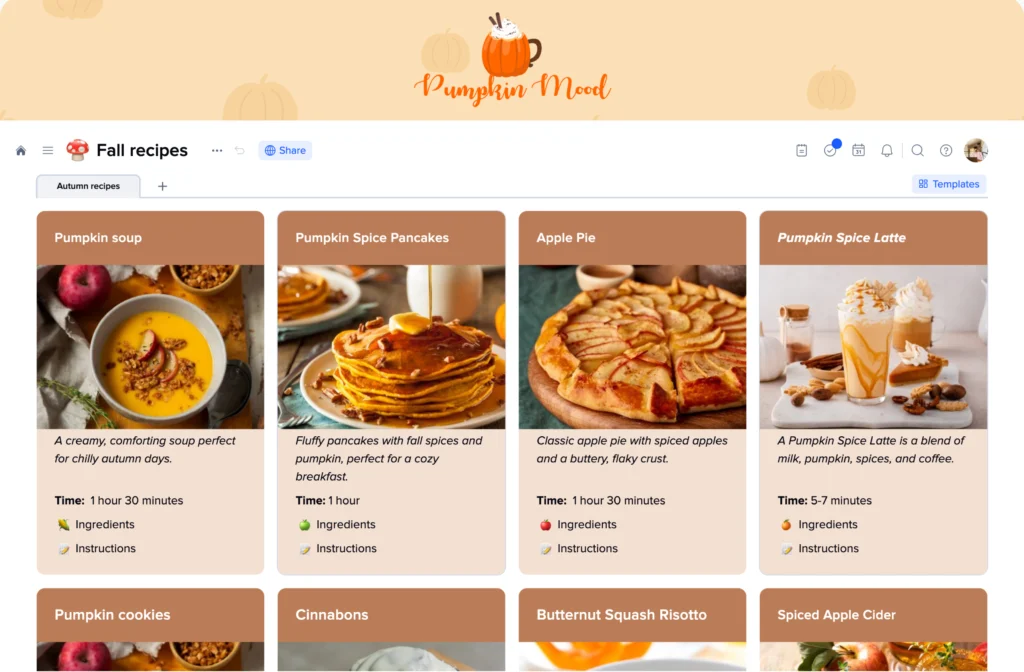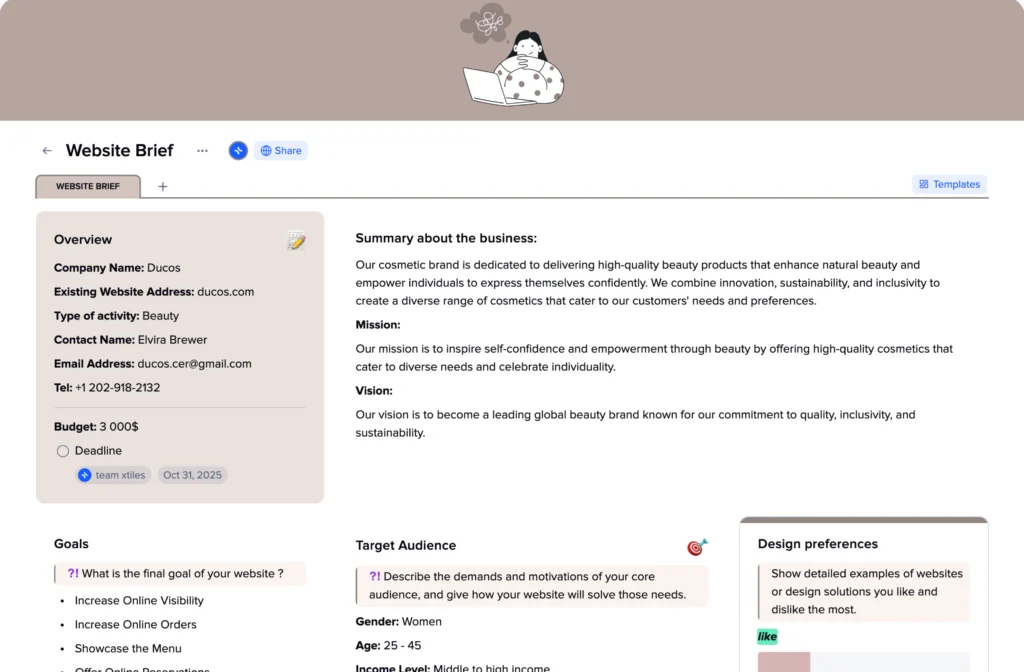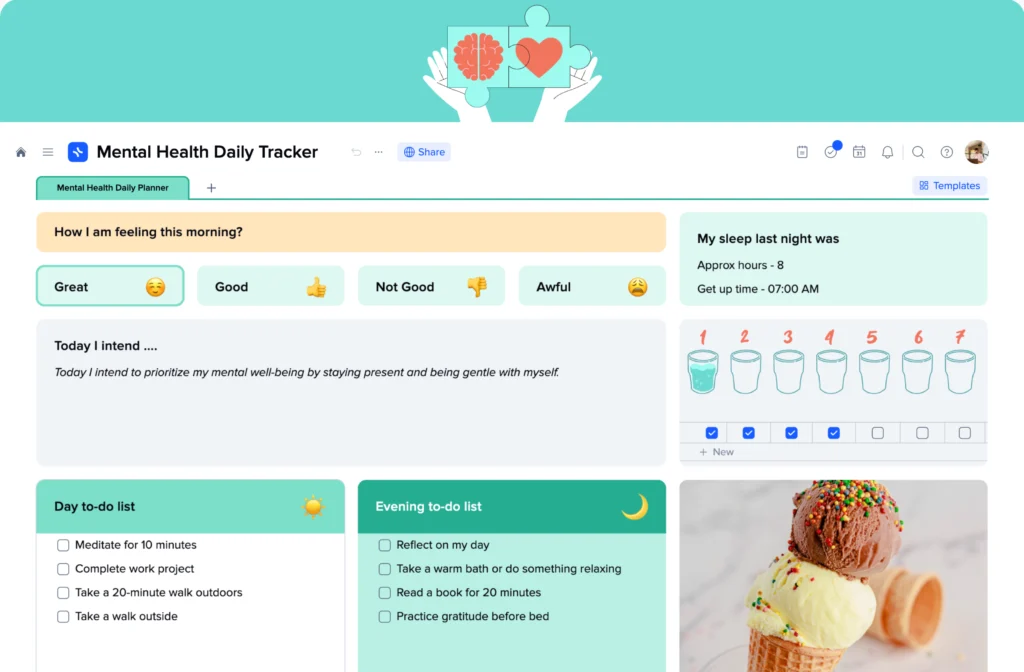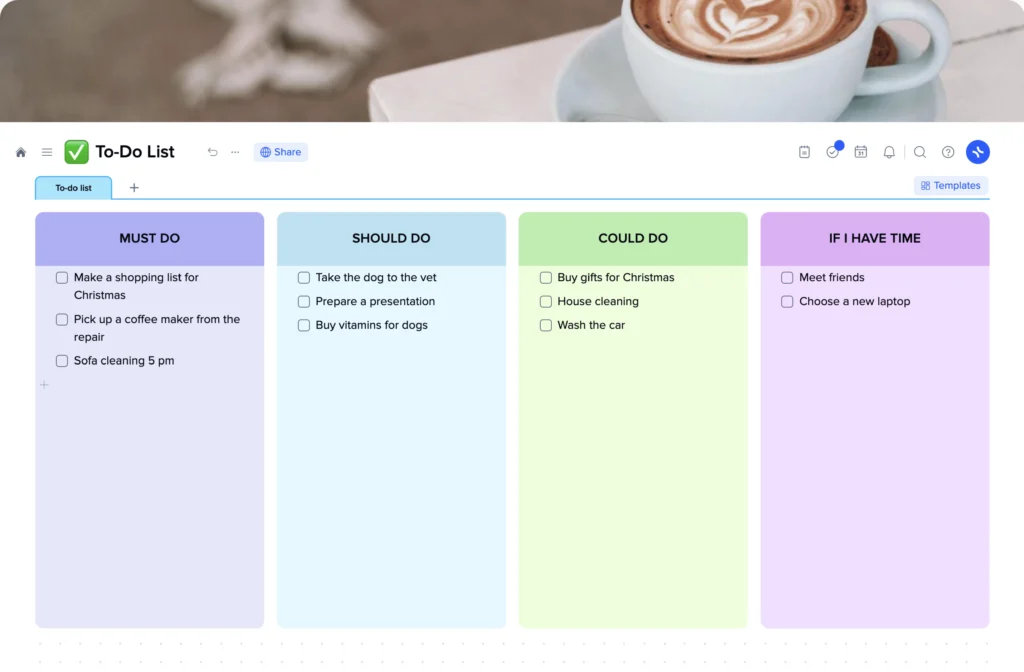How to make the best road trip planner using the xTiles Trip Planner Template?
Creating a road trip planner allows you to have a well-organized and enjoyable journey. Potential issues are already resolved, and your back is covered while traveling.
Without a plan, you may encounter difficulties that may lead to missing out on exciting opportunities. A road trip planner helps you determine your destination, duration, and route, ensuring you make the most of your time and cover all the places you want to visit.
Let the planning begin!
1. Destination selection & researching
One beautiful picture or video of some magnificent place may become an impulse to unglue us from our coaches for exploring the world. However, there are thousands and thousands of beautiful places. So, where to look for those that will be just exactly for you?
Probably any trip we can imagine was made before, and thankfully, people like to share their experiences. Modern technologies meet that urge, providing us with resources to plan our own trips.
Here are some ideas to help you get inspired:
1. Pinterest
We won’t start with Google because it’s an obvious way to find information, but it’s not always sufficient for finding inspiration. Using it in the later stages of your destination research may be more beneficial.
You have probably heard about Pinterest, or maybe you use it regularly for interior design, outfits, photoshoot ideas, etc. Basically, Pinterest is a search engine with pictures. It will provide you with insights and ideas for any kind of trip.
Pinterest can guide you when you have no idea where to go and when you approximately know your destination. If the second case is yours, it will be easier to find inspiration and ideas.
Use keywords related to your trip intent just like you would do on Google. For example, a European trip planner or a Hawaii trip planner, if you can’t specify where exactly you’re going or want to visit many places and cities.
2. Travel websites, blogs, magazines, and books
If you’re new to this and know no worthy travel blog, don’t worry. There always are good old, tested by millions of travelers Lonely Planet, TripAdvisor, National Geographic, and Travel + Leisure.
On these platforms, you will find many destination guides and travel tips, whether you need to craft an Alaska trip planner or a Disney trip planner.
Also, you will find there many inspiring stories that can help you discover new places to visit and make your mind up, prepare the backpack, and set your foot on a new adventure.
If you’re about traditional sources of information and inspiration for planning your trips, you may try travel magazines, such as Conde Nast Traveler, Traveler’s Digest, and Afar.
Their advantage is that professional travelers write all the articles and professional editors take care of the rest so that you get polished pieces of highly useful and qualifying information. Additionally, these publications often feature beautiful imagery.
Travel books by explorers and adventurers help you immerse yourself in your future journey. They are the best for the final stages of your planning, helping you catch the vibe of the place you’re going to visit.
However, remember that books written even a decade or two ago are rather historical records than the source of information for your planning today.
3. Social media
Following travel influencers and photographers give you ideas for potential trips daily. However, missing them in a constant stream of new posts is easy. That’s why saving everything you find amusing for later consideration is advisable.
You may make special folders to organize information about your potential trips and everything useful when traveling.
Another advantage of following travel influencers is their personal experience in different countries and places. However, you need to remember that not all advertising posts are marked as so. Sometimes bloggers don’t talk about their collaborations with hotels, restaurants, resorts, etc., claiming it to be a personal recommendation.
4. Online forums and travel communities
Online forums may become a healthy alternative to travel bloggers where you’re not sure what is a sincere recommendation and what is advertising. However, it may be hard to find related communities, or they may be closed to people outside.
However, platforms like Reddit’s r/travel, TripAdvisor’s Travel Forum, or Quora are accessible to everyone.
5. Documentaries and TV shows
If you dislike reading, or it’s hard or too time-consuming, you may watch travel documentaries and TV shows such as Anthony Bourdain’s “Parts Unknown,” “Planet Earth,” or “Rick Steves’ Europe.”
These shows are compelling sources of visual insights into different cultures, landscapes, and experiences, inspiring you to explore new destinations.
2. Budgeting and Finance
Planning a trip on a budget can be stressful. Planning a budget for any trip is stressful, especially if it’s your first experience. While you’re still at home, careful considerations and research will help you make it enjoyable and financially responsible.
Here are tips for building a travel expenses budget wisely yet without depriving yourself of joy:
- Start by assessing your home spending and saving habits. Make adjustments to save more and create a separate travel savings account.
- Analyze past trip expenses by reviewing bank statements and receipts. Create a spreadsheet categorizing each expense to gain insights for future budgeting.
Keep in mind that every country has a different standard of living which impacts prices. So, the budget section of your Switzerland trip planner and your Thailand trip planner or Turkey trip planner will differ.
- Identify key categories to budget for, such as transportation, lodging, food and drink, activities, and souvenirs.
The style of your trip will define your biggest expenses. If you’re creating a driving trip planner or motorcycle trip planner, fuel will take the biggest part of your budget. You will need to distribute your funds depending on that fact.
- Look for areas to save money, such as opting for cheaper transportation options, exploring local eateries, and considering car rentals instead of relying on taxis.
- You may consider a staycation as a budget-friendly alternative if traveling away from home isn’t feasible or within your current budget.
For example, a cross-country road trip planner may be as thrilled as spending time on tropical islands or strolling through ancient European cities.
Another great option is discovering your own city and its surroundings. The bigger city you live in, the more unknown places there are.
- Once you decide on your destination and budget, fill in your planned expenses into the xTiles Trip Planner to have all the data at hand at all times.
- Track your spending during the trip and compare it to your budget regularly. You may fill in your real expenses near the planned ones just to keep track of how much money you still have. Adjust your daily expenses if needed to stay within your budget.
By being mindful of your spending and making adjustments, you can stick to your travel budget and even have leftover funds for future adventures.
3. Transportation
Transportation for your trip requires detailed planning to avoid ending up in an entirely different place. It also requires research to be acknowledged about the local transportation system and options once you arrive.
Here are some tips to help you avoid inconvenient and wrong routes:
- Explore available transport options in the place you’re about to visit, like taxis, buses, trains, cars, bicycles, walking, boats, Segways, and subways. Choose the most suitable and budget-friendly option.
- Convenience is key if it’s within your budget. You may rent a car from a local company or use official airport transfers.
Many European countries have a polished public transportation system and well-developed bike infrastructure. If you’re crafting a Europe trip planner, you may minimize your expenses by using a wide range of public transport or renting a bike or scooter.
Also, consider the size of the place you’re visiting. Public transportation is suitable for larger cities, while smaller towns may require nothing except two legs and a pair of comfortable shoes for exploration.
- Prioritize safety. Research safety measures, ratings, and reviews of transportation providers, bus, train, and metro stations. Walking an extra mile to the next metro station may be better if the nearest one is famous for its high crime rate.
Also, be aware of local laws and regulations to ensure a safe journey. And remember that trying to use any kind of transportation without a ticket or pass may lead to unwanted consequences such as fees, which might be out of your budget.
- Time constraints should influence your choice. Public transportation is ideal for quick travel while walking and cycling offer a closer experience. Ride-sharing services can be cost-effective for time-sensitive trips, but you must be careful when choosing a driver or hitchhiking.
- Select appropriate luggage based on the duration of your tour. Suitcases are suitable for longer tours, but they might become a burden on a trip where you visit a couple of cities. Backpacks or crossbody bags work well for shorter trips.
- Align your mode of transport with planned activities. Consider whether sightseeing, water sports, or other activities require specific transportation options.
4. Accommodation
Choosing the right accommodation is crucial because you need a comfy place to relax and restore energy for tomorrow after a long day of exploring a new city. There are many aspects to consider when looking for accommodation that suits you:
- First of all, when crafting your trip itinerary planner, choose your preferred type of accommodation based on your budget, needs, and group size if you’re not going on your trip alone. Consider hotels, hostels, apartments, or vacation rentals.
It’s important to know that off-peak seasons and longer stays can offer cost-saving opportunities.
- Compare prices and read reviews on platforms like Booking.com, Airbnb, or VRBO.
When reviewing feedback from previous tenants, look for recurring concerns. If many people mention outdated facilities, it’s likely true. However, varying opinions on food may simply indicate personal preferences.
Also, beware of overly critical individuals: Some people are hard or impossible to please no matter what landlords or hotel staff do. Assess negative reviews for signs of personality clashes, paying more attention to how the hotel addressed the issues and if it aligns with your expectations.
Finally, if something concerns you, pay attention to it and look for another accommodation. Trust your instincts even though risk is a noble cause.
- Once you’ve found the ideal place, make a reservation, but be mindful of cancellation policies just in case something might ruin your plans.
- Put all the info you have about your booked accommodation into your xTiles Trip Planner to have it at hand. Saving the information is especially important if you depart in a couple of weeks or even months since it’s easy to forget something after that long time.
5. Packing Essentials
Having a comprehensive checklist of travel essentials for a vacation is always helpful, whether you’re a first-time traveler or have visited all countries worldwide.
Here are some secrets to help both newcomers and tough travelers to pack their travel essentials:
- Start by choosing the travel bag that matches your trip length, your destination, and your planned activities. Rolling luggage is best suitable for staying in comfortable hotels. Backpacks for those who are willing to explore non-stop.
- Organize your travel essentials using packing organizers like packing cubes. Keep your clothing sorted by type or outfit, and use compression sacs to save space. Or you may use food film for the same purpose by tightly covering your clothes with it.
Consider clothing with SPF or mosquito repellency for specific environments. That will allow you to use your SPF only for the face and other areas of the skin that are impossible to cover with clothes.
- Pack your toiletry bag following the TSA’s 3-1-1 rule for liquids. Your toothbrush, toothpaste, hair care items, sunscreen, makeup, and personal hygiene products go first. If you want to add something specific, consider whether you really need it and whether it will be a rational utilization of available space.
Also, if you’re going to stay in a hotel, find out whether they offer basic hygiene products, such as shampoo. Maybe you don’t need to take these products with you.
Finally, it’s advisable to pack a basic first aid kit with essentials like bandages, pain relievers, and medications specific to your destination or your chronic diseases.
- If, at this point, your packing turns into a headache, you may use the xTiles Packing List Template to use every square inch of your suitcase effectively.
6. Travel Documentation
When traveling, especially internationally, attention to detail is crucial. Many factors contribute to a smooth trip.
Remember these essential travel documents to be better equipped to handle various situations and ensure a smoother travel experience:
- Driver’s license, passport, and travel visa (if needed in your destination country). Also, carry proper identification, including copies, in case of loss.
- Copies of all identification documents. Keep copies in your carry-on and checked bags to facilitate replacements or baggage identification. Please, don’t put everything in checked luggage just in case it might get lost at the airport.
- Travel insurance plan details. Have a hard copy or mobile app access to your travel insurance certificate and contact information in case of an accident. Having a hard copy on you when visiting tropical countries or places with poor internet connection is crucial.
- Travel itinerary details. Keep copies of flight and hotel reservations as proof of payment and for easy reference. You may use the xTiles Trip Itinerary Template to keep all the important details in one place.
- Tickets for events. Yes, that’s a very obvious item to take. However, many trips and great evenings never became true because of overlooked or missed tickets. Thankfully, today it’s much harder because we can carry our tickets on our smartphones as proof of purchase to resolve any ticketing issues.
- Remember that depending on your destination, you may need other documents and licenses, so check everything before embarking on your trip.
7. Cultural Etiquette
When traveling to a new country, understanding its culture is crucial. When you don’t know what is going on around you, you lose a great deal of experience and might end up in unpleasant situations or even conflicts with locals.
Here are important things to find out before visiting a country:
- Clothing norms. Dress appropriately, respect local customs, and avoid offensive attire. The more you look like the local, the harder it is to spot you in the crowd for frauds and thieves for whom tourists are easy targets.
- Language. Learn basic phrases to communicate and show respect. The attempt to speak the local language is often considered as a respect to the culture and the country you’re visiting even if you speak with an awful accent making mistakes in every second word.
- Greetings. Understand local greeting customs and appropriate physical gestures. Knowing local gestures may be especially important when crafting an Italy trip planner. You may watch movies about tourists or foreigners in Italy to learn what is there to know for visitors. Italian films are great pieces of art and entertainment, yet they may lack the context you need because they were directed by Italians, for Italians.
Always be aware of gestures that may be considered disrespectful or offensive.
- Food etiquette. Research dining customs to avoid unintentional rudeness. For example, Italian cafes stop serving cappuccino after 11 am, and asking for one might be considered rude because Italians take their coffee culture very seriously.
- Interactions between groups. Understand how different groups interact and behave towards each other.
- Tipping. Familiarize yourself with local tipping customs to avoid overpaying or causing offense.
- Avoid stereotypes. Generalize cultural tendencies but remember that individuals are unique, and some stereotypes might be very offensive.
8. Local Cuisine and Dining
Food on a trip may be of two kinds – something you eat on the run just to fuel yourself or local cuisine that becomes a great experience and makes the trip twice as exciting. Also, if your intent is to immerse yourself in the local culture, without local cuisine, it will be hard.
Eating like a local while traveling is beneficial due to many reasons. Besides enhancing your overall experience, it allows you to save money and time, discover hidden gems, and support local businesses.
Here are 12 tips for immersing yourself in food culture and eating like a local:
- Research the local food culture before your trip using blogs, travel podcasts, and specialty TV series like Netflix’s Street Food. You may use all the sources we recommended in the 1st chapter of our guide.
- Start your culinary adventure at the local produce market to get a sense of local ingredients and flavors. If you’re visiting Mediterranean countries, visiting local markets is a must for fully immersing yourself in the local culture and vibe.
If you’re renting an apartment with a kitchen, you may cook yourself using local ingredients, which will turn even your usual meals into a whole new experience.
- If you are looking for restaurant recommendations, you may do so via Google Maps or TripAdvisor. More and more travelers prefer to use the first option as it often features more authentic and local establishments. Additionally, some small restaurants might not get enough attention from professional globetrotters, yet common customers often write reviews on Google Maps.
- Look for crowded places frequented by locals, as they tend to serve fresh and delicious food. You may even go further than just looking at what locals do and ask them for recommendations. They are often eager to share their food heritage, so you may get a super detailed guide on the best restaurants that even TripAdvisor would envy.
Also, you may join a food tour to sample a variety of local dishes and gain insights from knowledgeable guides. Still don’t fill like your immersion in local cuisine is full? Consider taking a cooking class to delve deeper into the local culinary traditions and learn to recreate dishes at home.
- Some basic local vocabulary to communicate with restaurant staff and show respect for the culture will help too. Thankfully, you did that in the previous chapter. Knowing at least a couple of words will help you clarify the ingredients of the meal, which is especially important for people who have allergies or are vegans.
- Once you’re in the restaurants, observe locals and learn the logistics and etiquette of ordering at different types of eateries. For example, in Italy, you can have your coffee at a table or at a counter, and you will get your order with a small note written by hand, which you use to pay when you are ready to leave the place.
- Before embarking on a trip, check local food events and festivals to indulge in the best local cuisine.
9. Activities and Sightseeing
When you’re organizing a vacation, a stress-free and enjoyable planning process may be ensured through different ways. Here are a couple of suggestions to help you:
- Allocate a day for leisure. While it may be tempting to fill your itinerary with non-stop activities to use your time in the new place to the maximum, it’s crucial to include a day for relaxation. Everyone needs rest, especially tireless explorers.
Without allowing yourself some downtime, you risk exhaustion and burnout, and no landscapes or local food can heal that.
- Embrace spontaneity. While creating a well-organized list of activities aids in vacation planning, it’s important not to over-plan and leave no room for spontaneity. Some of the most memorable aspects of exploring a new place are the unexpected discoveries along the way.
- Check the weather. A simple yet crucial tip in vacation planning is to always check the weather. Failing to do so may result in booking outdoor activities on rainy days or missing out on sunny adventures while being stuck indoors.
Weather conditions have a significant impact on the success and enjoyment of your planned activities, so it’s essential to be informed beforehand to adjust your trip itinerary and avoid disappointment.

